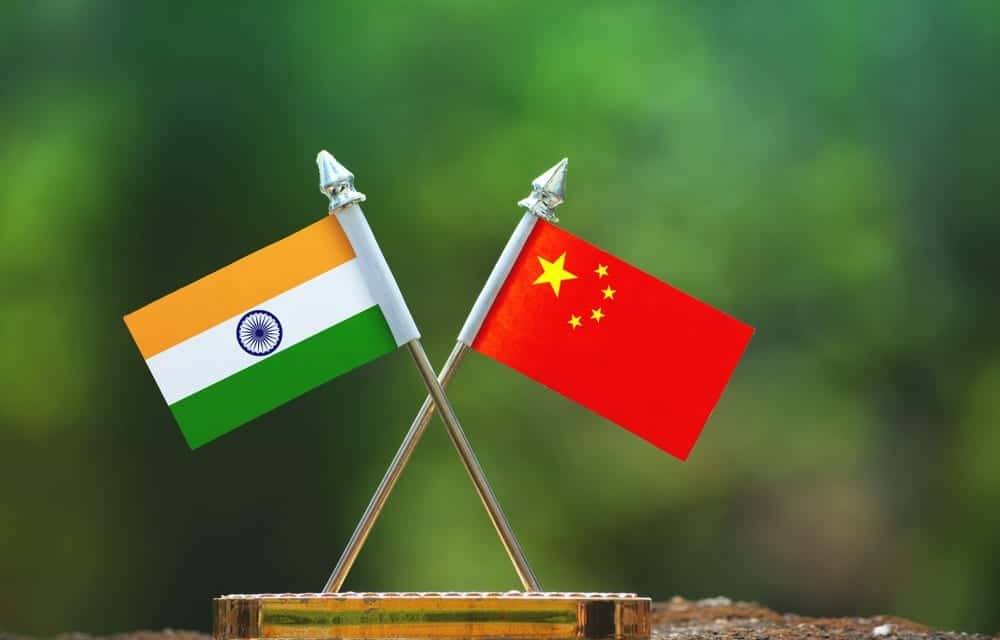New Delhi (IPA Service): The cornerstone of USA’s Indo- Pacific geopolitics has been the hope that India could act as a pro-Western counter-balance to China—a notion emphasized since Bill Clinton’s visit to Delhi in 2000 and consistently supported by every subsequent US president, regardless of party affiliation. This strategic belief was evident during Narendra Modi’s recent visit to Washington, where he was warmly welcomed and defence technology deals usually reserved for close allies were extended to India, solidifying the strong bilateral relationship and reinforcing India’s significance in America’s geopolitical calculations.
The assumption of India becoming a staunch pro-Western partner to the US might be unfounded as India does not form formal alliances. Recent developments in India-China relations indicate that India may be less committed to the US than some in Washington might believe.
India-China relations deteriorated sharply after a bloody border brawl in 2020, where 20 Indian troops and at least four Chinese soldiers lost their lives during a violent clash fought with rocks and iron bars on the high, steep ridge lines above the fast-flowing Galwan river along the freezing Himalayan frontier. This incident led to an escalation in Indo-American defence cooperation. America promptly provided cold-weather gear to India’s border forces and devised plans for more joint military exercises between the two nations.
Furthermore, the US showed approval as Prime Minister Narendra Modi’s government transferred around 70,000 troops from India’s western frontier with Pakistan to strengthen its northern border with China. In response to the tensions, India took decisive actions against China, such as banning over 300 Chinese apps, conducting tax raids on Chinese companies and imposing trade and investment restrictions. Despite these measures, the tension between India and China has somewhat eased in recent times.
After a brief economic freeze, bilateral trade between India and China rebounded strongly in 2021, growing by 43% due to the recovery after the pandemic. In the previous year, it had increased by 8.6%. As a result, the total value of trade reached $136 billion, which is 27 times greater than during Bill Clinton’s visit to Delhi.
Currently, the India-China frontier remains highly disputed and heavily militarized, but both countries appear eager to de-escalate their conflict over it. After 18 rounds of negotiations between military commanders, they have withdrawn troops from five potential flashpoints, creating ‘buffer zones’ that neither side patrols. Only two major frontier hotspots remain unresolved.
If India and China can resolve their territorial dispute as they did in 1988 for over three decades, it could lead to a significantly different world from what American strategists expect. India is unlikely to support American forces in a conflict with China over Taiwan and a further improvement in India-China relations would make this even more improbable. In such a scenario, India would also be less inclined to align with the West on important global issues, such as climate change, trade and debt.
Both India and China would benefit from maintaining a peaceful relationship. However, India’s attempt to reduce its economic reliance on China showed that achieving this goal would be challenging. Modi’s top priorities, infrastructure and manufacturing, heavily depend on Chinese inputs. India’s pharmaceutical industry, a major exporter, relies on China for 70% of its active ingredients. Even if the prime minister considered reducing such supplies (which seems unlikely), influential business lobbies in India would strongly oppose such a move.
The short pause in the relationship highlighted the strong feelings and influence of the issue, but it did not alleviate India’s security concerns regarding China. These concerns are deep-rooted and it will continue to strengthen its defence capabilities regardless. India views rapid economic growth as crucial to its build-up and engaging in business with China is seen as a necessary means to achieve that growth, among other factors.
China has a clear interest in maintaining a good relationship with India, making its recent practical approach more understandable than its past aggressive behaviour. China’s previous hostility on the border seemed to accomplish nothing other than reinforcing India’s security cooperation with the US. China’s slowing economy has highlighted the increasing significance of India’s vast domestic market for Chinese exporters.
At the time of the border clash, China might have been more respectful of India than the violence suggested. Recent reports from India indicate that the border brawl, although mainly instigated by China, was more a result of local decision-making rather than a strategic move. Regardless, China’s strategic interests and recent diplomatic outreach suggest that a similar incident is now less likely to recur.
A peaceful and fruitful India-China relationship could bring enormous benefits to their massive populations and the world. Moreover, it would pose a significant challenge to Western thinking that American and other strategists must seriously consider. Despite the potential improvement in India-China relations, it does not diminish the importance of strong America-India ties. India will still seek assistance in safeguarding itself from China, and fostering close ties with the US will yield numerous benefits beyond security concerns.
America needs to stop assuming that India will automatically support its aggressive stance against China. If India is to act as a counter-balance to China, it must not only have the capacity to do so, but also be genuinely willing to take on that role. At the moment, despite omepro-US tilt, Indian policy makers are not prepared to go the whole hog with the US aggressive strategy towards China.(IPA Service)
By Girish Linganna. The statements, views and opinions expressed in this column are solely those of the author and do not necessarily represent those of The Aryavarth Express.
